
KISS
Everyone knows that I’m a little bit partial to the good old genre of rock music, so as we gear up for the onslaught of Download Festival in a few weeks, we thought it best to honour the rock legends that have shaped the music scene to date.
Generally defined as a music genre which revolves around the electric or acoustic guitar with a heavy bass and drum-laiden rhythm keeping the pace, with most ‘rock bands’ having four members; an electric guitarist, lead singer, bass guitarist, and a drummer, with some choosing to ditch one of the members in favour of a lead singer who also thrashes around on an instrument.
The Beginning
Many would argue that true rock music began in the US in the late 1940’s with Rock and Roll music which brought together rhythm and blues, gospel music, and country and western.
Bill Haley's "Rock Around the Clock" became the first rock and roll song to top Billboard magazine's main sales and airplay charts in 1955, and is thought to have been the cornerstone upon which this entire genre has been built.
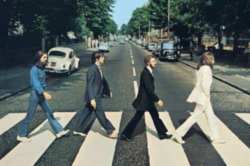
But as usual, the British weren’t far behind jumping on this bandwagon, and slowly but surely, we developed our own rock and roll scene, without the ‘race barriers’ that marred the US music scene, and shocking as this may sound, it was Cliff Richard who had the first ever British rock and roll hit, with Move It.
Then, of course, came The Beatles, who took British rock over to the US with their hit, I Want To Hold Your Hand, closely followed by The Rolling Stones, The Animals and The Yardbirds.
Psychedelic rock and the Summer of Love
As with most genre’s of music, there has to be offshoots, and although there are many subgenre’s, we only have enough space to discuss a couple, so we thought it fitting to mention that in the 1096’s we began to see the emergence of Psychedelic rock.
Although the LSD inspired vibe began in the folk scene, it quickly took off with rock fans when Pink Floyd decided to have a little go and from there a new ‘scene’ was made; In August 1966 The Beatles released their Revolver album, which featured psychedelia in "Tomorrow Never Knows" and in "Yellow Submarine", along with the memorable album cover, whilst The Beach Boys responded in the U.S. with Pet Sounds.
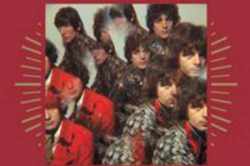
But is wasn’t until 1967 that the scene really took off, with The Doors and Jefferson Airplane releasing drug-themed LPs and the Beatles releasing Sgt. Pepper's Lonely Hearts Club Band whilst The Rolling Stones released Their Satanic Majesties Request.
Of course, who can ignore the Glam Rock scene that emerged as a direct result of Psychedelic rock? Defined by the likes of T. Rex, Roxy Music, Steve Harley and Cockney Rebel, and David Bowie, we still see bands jumping on that bandwagon today in the form of The Darkness and Steel Panther.
Then came the turn of bands who wanted to ‘push the boundaries’ of rock music and started to experiment with different instruments and just be a bit more ‘wild’ or ‘out there.‘
It got to the point where bands such as The Beatles, Pink Floyd, The Moody Blues and Procol Harum experimented with new instruments including wind sections, string sections, and even full-blown orchestras, whilst in turn, dishing out longer, more elaborate songs to anyone who had enough time to listen.
Changes in the 1970 & 1980’s
By the 1970‘s there was a new wave of rock music in the UK, which saw heavier rock bands such as AC/DC, Grand Funk Railroad, The Rolling Stones, Led Zeppelin, Deep Purple, Queen, Alice Cooper, Judas Priest, Status Quo, Aerosmith, Black Sabbath, Kiss and Uriah Heep take centre stage with their aggressive, hard driven sounds of overdriven electric guitars and an insistent 4/4 drumbeat.
It was during these years that the so called ‘classic rock’ bands started to emerge and the whole genre of rock music began to change, and although many consumers loved it, it was the critics who began to have a strong distaste for the genre, especially after Van Halen’s debut album opened the floodgates for bands such as Metallica, Iron Maiden, Slayer, Megadeth, and Anthrax to gain more mainstream credibility.
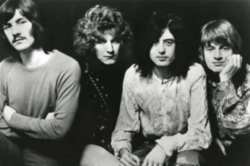
The 1980’s also saw a rise in so-called Alternative rock, which was championed mainly by Michael Stipe and his mates in R.E.M, simple because they couldn’t be pigeon-holed into any existing rock genre, they thought they might as well create their own.
Although in itself the label ‘alternative’ meant anyone who didn’t fit into the traditional 4-piece rock band orchestration, it could technically apply to anyone! But regardless, by the early 1990s, "alternative" bands effectively marketed themselves as the successors to hard rock. The main culprits here were Jane's Addiction, Sonic Youth, The Smiths, Dinosaur Jr. Red Hot Chili Peppers, the Pixies, Hüsker Dü, The Cure and countless others.
1990’s & 2000’s
The 1990’s rock scene belonged to Kurt Cobain and his mates in Nirvana who pioneered yet another sub-genre, Grunge.
This side of rock was seen as ‘dirty’ due to the vile lyrics and the sleazy sound of many of the songs, matched with the unkempt appearance of most of the musicians, who actively rebelled against the over-groomed images of popular artists.
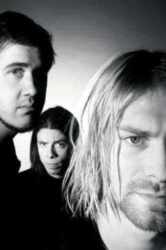
The, as we slipped into the last 1990’s, Damon Albarn and his band of merry men in Blur started the phase of Britpop which opened the floodgates to the likes of Oasis, Suede, Supergrass, Manic Street Preachers and Pulp.
As we entered the 2000’s, the Britpop movement gave way for a more pop punk scene, with modern rock bands drawing influence from mainstream pop music, resulting in bands such as Green Day, Blink 182, Sum 41 and The Offspring.
Rap Metal, Nu Metal and Emo
As soon as pop music got it’s claws into the rock scene, it was typical that rappers wanted to get involved too, beginning with Faith No More and followed by the likes of Rage Against The Machine and Limp Bizkit, Korn and Slipknot.
It brought a fresh, new attitude to the genre, one which is popular today and can be seen dominating 2009’s Download Festival next month. In this bracket of music, the turntable scratching of rap is fused with distorted guitars of metal-oriented rock.
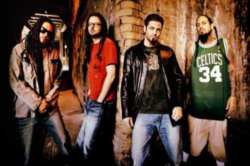
As it became more and more mainstream to listen to this music, bands such as Linkin Park and P.O.D jumped on the bandwagon and began receiving radio airplay which led to record labels signing more and more nu metal bands.
In turn, Scandinavian metal also grabbed a foothold on the rock scene, with several continental metal bands scoring albums in the top 20 of the charts between 2003 and 2008, including Finnish melodic death metal band (and my celeb best mates) Children of Bodom, Norwegian symphonic extreme metal act Dimmu Borgir, and two power metal groups, Germany's Blind Guardian and Sweden's HammerFall.
And finally….
In all, there is no doubt that the umbrella of rock music covers such a wide spectrum that we could never cover in just one day, but one thing is certain, it’s influence reaches far and wide, in fashion, film and social groups. And for now, rock music lives. m/
Explore how rock has influenced fashion further here.
FemaleFirst - Ruth Harrison
Everyone knows that I’m a little bit partial to the good old genre of rock music, so as we gear up for the onslaught of Download Festival in a few weeks, we thought it best to honour the rock legends that have shaped the music scene to date.
Generally defined as a music genre which revolves around the electric or acoustic guitar with a heavy bass and drum-laiden rhythm keeping the pace, with most ‘rock bands’ having four members; an electric guitarist, lead singer, bass guitarist, and a drummer, with some choosing to ditch one of the members in favour of a lead singer who also thrashes around on an instrument.
The Beginning
Many would argue that true rock music began in the US in the late 1940’s with Rock and Roll music which brought together rhythm and blues, gospel music, and country and western.
Bill Haley's "Rock Around the Clock" became the first rock and roll song to top Billboard magazine's main sales and airplay charts in 1955, and is thought to have been the cornerstone upon which this entire genre has been built.

But as usual, the British weren’t far behind jumping on this bandwagon, and slowly but surely, we developed our own rock and roll scene, without the ‘race barriers’ that marred the US music scene, and shocking as this may sound, it was Cliff Richard who had the first ever British rock and roll hit, with Move It.
Then, of course, came The Beatles, who took British rock over to the US with their hit, I Want To Hold Your Hand, closely followed by The Rolling Stones, The Animals and The Yardbirds.
Psychedelic rock and the Summer of Love
As with most genre’s of music, there has to be offshoots, and although there are many subgenre’s, we only have enough space to discuss a couple, so we thought it fitting to mention that in the 1096’s we began to see the emergence of Psychedelic rock.
Although the LSD inspired vibe began in the folk scene, it quickly took off with rock fans when Pink Floyd decided to have a little go and from there a new ‘scene’ was made; In August 1966 The Beatles released their Revolver album, which featured psychedelia in "Tomorrow Never Knows" and in "Yellow Submarine", along with the memorable album cover, whilst The Beach Boys responded in the U.S. with Pet Sounds.

But is wasn’t until 1967 that the scene really took off, with The Doors and Jefferson Airplane releasing drug-themed LPs and the Beatles releasing Sgt. Pepper's Lonely Hearts Club Band whilst The Rolling Stones released Their Satanic Majesties Request.
Of course, who can ignore the Glam Rock scene that emerged as a direct result of Psychedelic rock? Defined by the likes of T. Rex, Roxy Music, Steve Harley and Cockney Rebel, and David Bowie, we still see bands jumping on that bandwagon today in the form of The Darkness and Steel Panther.
Then came the turn of bands who wanted to ‘push the boundaries’ of rock music and started to experiment with different instruments and just be a bit more ‘wild’ or ‘out there.‘
It got to the point where bands such as The Beatles, Pink Floyd, The Moody Blues and Procol Harum experimented with new instruments including wind sections, string sections, and even full-blown orchestras, whilst in turn, dishing out longer, more elaborate songs to anyone who had enough time to listen.
Changes in the 1970 & 1980’s
By the 1970‘s there was a new wave of rock music in the UK, which saw heavier rock bands such as AC/DC, Grand Funk Railroad, The Rolling Stones, Led Zeppelin, Deep Purple, Queen, Alice Cooper, Judas Priest, Status Quo, Aerosmith, Black Sabbath, Kiss and Uriah Heep take centre stage with their aggressive, hard driven sounds of overdriven electric guitars and an insistent 4/4 drumbeat.
It was during these years that the so called ‘classic rock’ bands started to emerge and the whole genre of rock music began to change, and although many consumers loved it, it was the critics who began to have a strong distaste for the genre, especially after Van Halen’s debut album opened the floodgates for bands such as Metallica, Iron Maiden, Slayer, Megadeth, and Anthrax to gain more mainstream credibility.
Tagged in The Beatles

